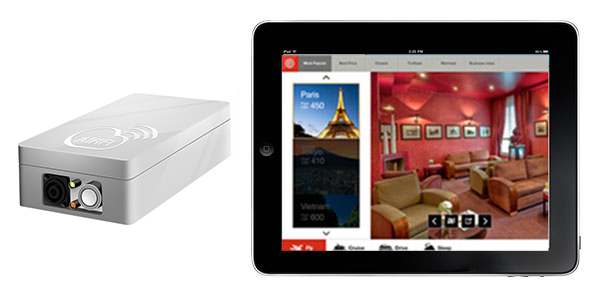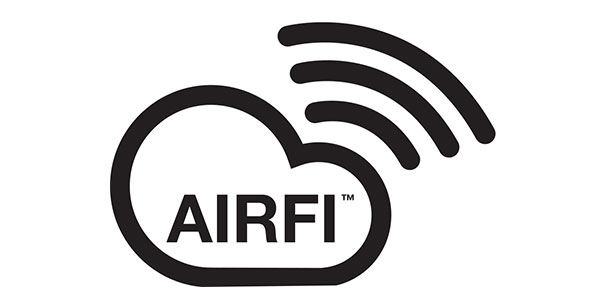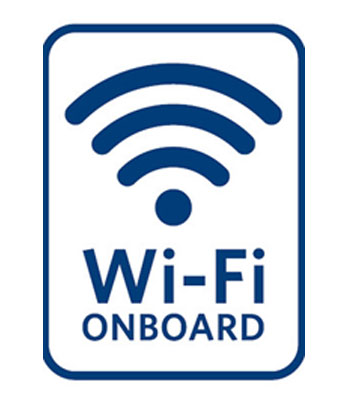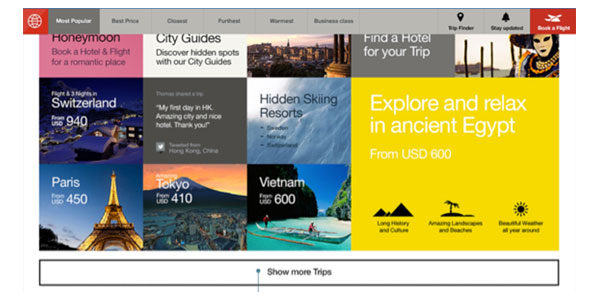
There can be no disputing the fact that the vast majority of today’s travellers want access to high-quality connectivity at every stage of their journey, including throughout the flight itself. However, bandwidth capacity constraints and high costs continue to be a stumbling block, and up until now a viable alternative has failed to materialise.
We say ‘up until now’ because that viable alternative may just have surfaced. FTE can exclusively reveal that MI Airline has developed a compact, portable, battery-powered and self-scaling Wi-Fi network, which can be integrated into existing aircraft to create an alternative connectivity and entertainment option.
The product is called ‘AirFi’ and through the use of an offline network, similar to an intranet connection, it can provide passengers with access to magazines, newspapers, games, destination guides and a passenger-to-passenger chat function, all using their own smartphone or tablet. In addition, passengers can use the network to order and pay for duty free products, and food and beverage items during the flight. So, if a passenger is keen to have some form of connectivity to keep them occupied during the flight, but is not desperate for a connection that will allow them to check their emails, for instance, the likes of AirFi could provide the solution.
Now, MI Airline is not itself claiming that this solution is designed to replace fully-fledged in-flight Wi-Fi, but it surely offers an alternative for those airlines that want to satisfy their passengers’ demands for connectivity, but feel that offering costly Wi-Fi should not be the only option.

Job Heimerikx, CEO of MI Airline, explained: “Our airline customers wanted us to develop a wireless onboard network to enable passengers to communicate with the cabin crew, which we did with ‘Connected Crew’. At the same time they wanted to have an additional communication channel to engage passengers using their own devices, developing all sorts of new homemade applications with the aim to become more customer-centric.
“MI created the AirFi box based on research that Internet connectivity is only one of the many features asked for by the passenger. The cost versus the use of Internet has been unfavourable for many airlines, killing the business case before it’s even written. With only a fraction of the costs, an airline can now offer more services and entertainment, creating a whole new sales and communication channel.”

KLM: ‘Halfway house’ connectivity could be a low-cost option for some airlines
KLM is among the many airlines currently trialling an onboard Wi-Fi solution, and talking generally about the potential benefits of a full Wi-Fi connection and a ‘halfway house’ product, Peter Verheijde, Product Innovation Director at KLM, offered his thoughts on both options.
He said: “The ‘halfway house’ connection could be a low-cost option for offering the passengers some basic information and entertainment. A huge advantage is definitely the low cost and easy implementation. This would then probably make more sense on intra-European flights where there are less entertainment options at this stage; I see this product less on longer flights.
“Personally, overall I expect passengers to want to be fully connected and surf the Web, or watch some video on their own device. In general, I think passengers want Internet as they have at home, at a high speed and lower costs, which are difficult to match in the onboard environment.”
With this in mind, KLM and Air France are currently trialling a Wi-Fi solution, each on a single Boeing 777-300, which offers full connectivity. The trial is ongoing, feedback is still being analysed and advice on further rollout is expected later this year.
Addressing cost concerns
Of course, the high cost associated with the installation of a full Wi-Fi solution is an issue for many airlines. Recently, Ryanair CEO Michael O’Leary told FTE that the low-cost carrier is exploring onboard connectivity, “but we’re only going to start addressing that when it gets cheaper”.
Another low-cost airline, AirAsia, also revealed to FTE in January that it is exploring whether its passengers want a “Wi-Fi or connectivity” solution on short-haul flights with a view to starting a trial later this year. Even the likes of Emirates admits that “most passengers don’t want to pay” for a full Wi-Fi connection while onboard.
With this in mind, there is surely a case for the likes of AirFi. While it doesn’t promise to offer everything that a satellite-based Wi-Fi solution does, it can guarantee to offer a form of connectivity, albeit a lighter version, but at a fraction of the cost.
Highlighting this, Ryanair’s O’Leary claims that the “capex per aircraft is €300-400,000” to provide onboard connectivity, whereas MI Airline CEO Job Heimerikx told FTE that the AirFi box and platform can be installed for less than €2,000 per device, per year.
‘Wi-Fi lite could become the connectivity solution of choice’

Elsewhere in the industry, other suppliers in the in-flight connectivity chain have also reacted to the idea of portable networks with a keen interest. Among them is Mezzo, a company that supplies airlines with tablets pre-loaded with content to rent out to their passengers. Dave Sampson, the company’s CEO, commented: “There are actually more aircraft flying short- and medium-haul where movies don’t really make so much sense. So, for all these regional and point-to-point airlines, a ‘halfway house’ model offers an interesting alternative, addressing the needs of the passengers to have something to occupy them, and probably replacing physical content like newspapers and magazines that can also contribute significant weight, or provide a cleaning headache on fast turnarounds.”
He added that outside the US in particular, this alternative model “may be a more cost effective route to find out how many passengers will interact with onboard Wi-Fi and how to price and position it”. He also said the new solution could be used as a differentiator between classes – embedded IFE in Business Class and a free ‘halfway house’ connection in Economy.
While Sampson sees pre-loading movies onto rentable tablets as the best combination in terms of providing entertainment, he thinks “Wi-Fi lite”, as he calls it, has lots of potential as a form of connectivity. “It is probable that airlines employing this Wi-Fi lite solution may develop new business models that don’t rely on expensive streamed video and it could easily become the selection of choice for a large number of carriers,” he stated.
A viable alternative to a full Wi-Fi product?
Naturally, for some airlines and passengers, connectivity should mean fully-fledged Wi-Fi, but for those who are eager to find a balance between cost and performance, this new model – encompassed by MI Airline’s AirFi solution – could certainly appeal. It has the potential to shake up the in-flight connectivity market, which has been struggling to overcome the same difficulties for a number of years.
While we certainly don’t expect the likes of AirFi to replace full Wi-Fi products – and nor is it intended to – the introduction of a viable alternative could be enough to revolutionise the onboard connectivity sector.






